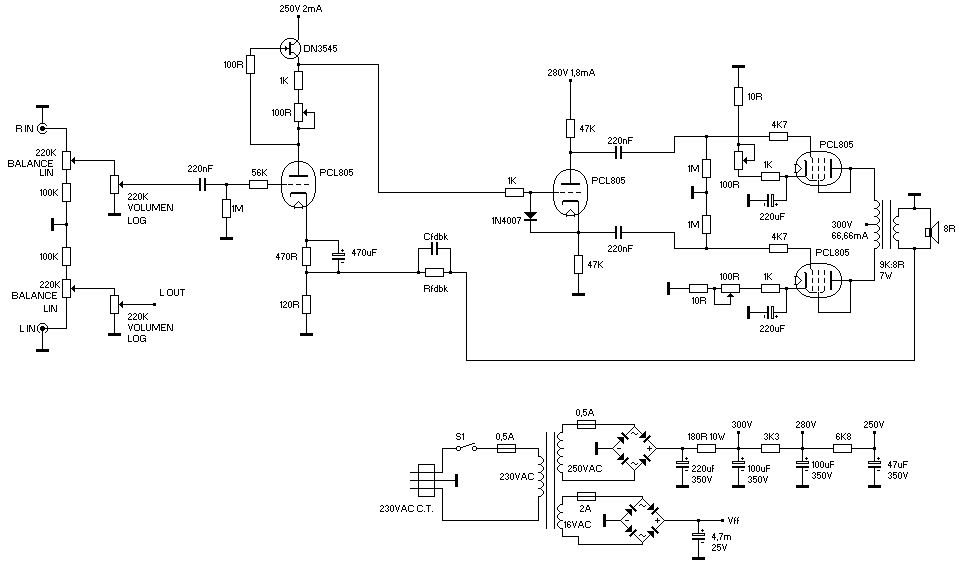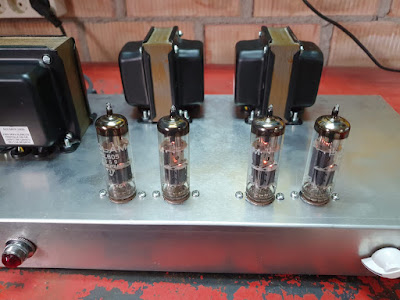As my final degree project, I designed and built a high-fidelity stereo amplifier using common television valves — in this case, the PCL805, although PCL85 tubes or other equivalent versions with different filament voltages could also be used, simply by adjusting the filament supply accordingly.
The amplifier features a push-pull output stage operating in triode mode, delivering around 7W RMS of output power per channel with approximately 1% THD in open loop — which is quite good. The output stage operates in class AB1, with the first ~5W amplified in class A, and the remaining power in class B.
As for the input stage, it’s designed primarily for modern audio sources such as computers, smartphones, TVs, CD players, etc. Therefore, an input of around 0.5V RMS is required to achieve full output power. The amplifier also includes volume and balance controls to compensate for any channel imbalances.
The power supply is solid-state, using UF4007 diodes which generate less switching noise. The filaments are powered with DC, which is not strictly necessary, but in this case, I chose to do so because the power transformer I had available provided 16V AC, while the PCL805 tubes require 18V. By rectifying to DC, it was easy to obtain the needed 18V while also reducing noise injected into the circuit.

One of the most notable features of the schematic is the use of a cathodyne phase inverter with direct coupling, which allows the elimination of a capacitor and its associated blocking distortion issues, while also achieving excellent low-frequency decoupling. Additionally, in the input stage, a DN3545 MOSFET is used as a constant current source on the anode, which flattens the load line and significantly reduces distortion compared to a standard resistor-loaded stage.
To learn all the in-depth design details, as well as to see photos of the different construction stages and final testing, you can download the full thesis by clicking this link.
The document also includes a thorough introduction to the behavior and operation of a basic triode gain stage, making it a very useful read for anyone wanting to learn how to design simple signal amplifiers using triodes.
I’d also like to thank my supervisor, Manuel Ángel Perales Esteve, for accepting and supporting this project, since it’s certainly uncommon nowadays to work with vacuum tubes at university.
Lastly, I’ve been using this amplifier quite a lot — both as a PC audio amplifier and also for my turntable setup, which of course has its own dedicated tube preamp. I’ll write more about that one in a future blog post 😉.

